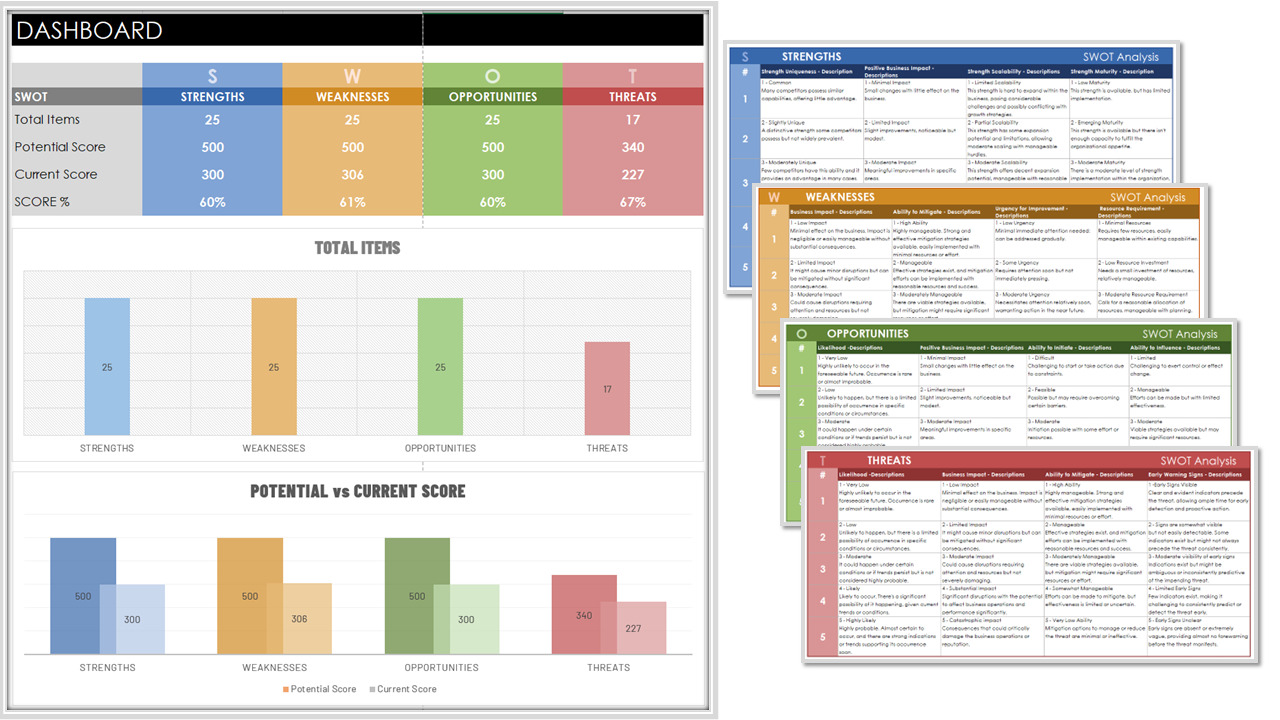
Are you ready to gain a comprehensive understanding of your business’s present and future? The SWOT analysis – Strengths, Weaknesses, Opportunities, and Threats – is a tool for business leaders seeking clarity and strategic direction. In this guide, I’ll walk you through the essentials of a SWOT analysis and introduce a free template designed to streamline your analysis process.
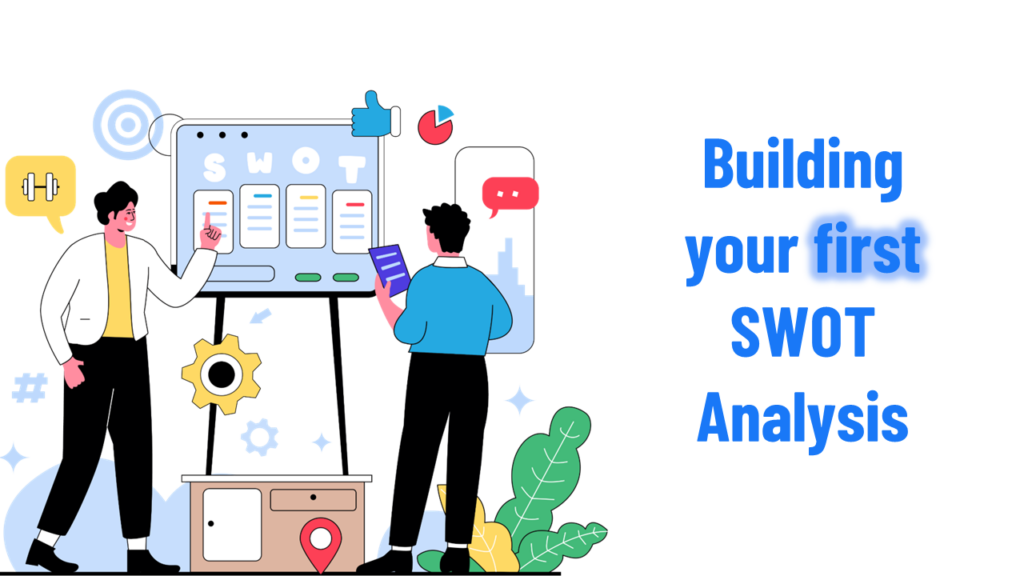
Understanding SWOT Analysis
At its core, a SWOT analysis provides a panoramic view of your business landscape. It encapsulates both internal aspects (strengths and weaknesses) and external factors (opportunities and threats). This approach empowers leaders to identify key areas for growth, anticipate challenges, and craft targeted strategies. Additionally, SWOT probes into the deep corners of your business, helping you to think through business areas you may not think often about.
The Dynamics of SWOT Elements
Strengths & Weaknesses
Strengths highlight your competitive edge while weaknesses pinpoint areas needing improvement. It’s crucial to objectively evaluate these aspects, acknowledging both the elements you excel in and those requiring attention. Remember, overestimating strengths or underestimating weaknesses can hinder your business’s progress.
Opportunities & Threats
Opportunities signify potential avenues for growth, while threats encompass external risks. Leaders often tend to overestimate the likelihood of opportunities and underestimate the impact of threats. It’s essential to gauge these factors realistically to form a robust strategy.
Navigating the SWOT Matrix
While the conventional 2×2 matrix categorizes these elements, a more effective approach involves orienting your analysis along a temporal axis – Horizon 2 and Horizon 3 – on a time continuum. This approach ensures a comprehensive examination of your business’s present and future scenarios, facilitating better strategic planning.
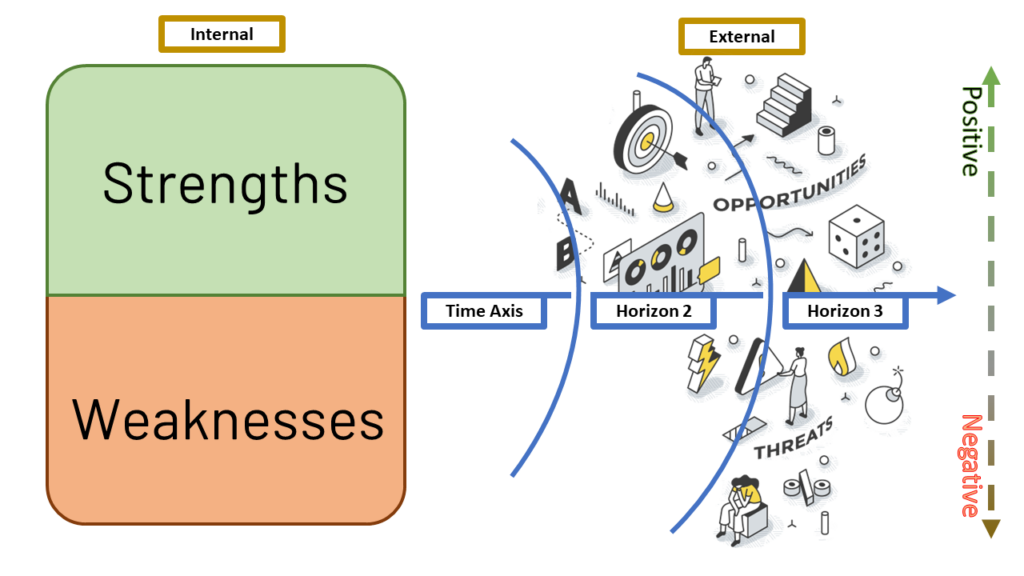
Utilizing the Free SWOT Template
The provided spreadsheet template streamlines your SWOT analysis process by incorporating 16 scoreable dimensions, 4 for each SWOT component. This empowers you to jot down ideas, score them objectively, and outline actionable strategies with precision. Additionally, the video walkthrough explains how to think about each component, and how to score each item so you get a good idea of where to spend your energy.
How to Score SWOT Strengths
In the provided SWOT template, you’ll be asked to brainstorm your company strengths then score each based on the following BUMS criteria:
- Business Impact: On a scale from minimal to game changing, how much will this strength affect your company?
- Uniqueness: How common is this strength among competitors? Are you the only company who can do this? Is it so widespread you probably shouldn’t even add it as a strength?
- Maturity: How mature is this capability? How much additional capacity and refinement are necessary?
- Scalability: How far can you spread this skill? Is it in the hands of a capable few, or can you train many others to execute this well?
Your scores will be summed up and displayed on the dashboard for a heads up display of your progress.
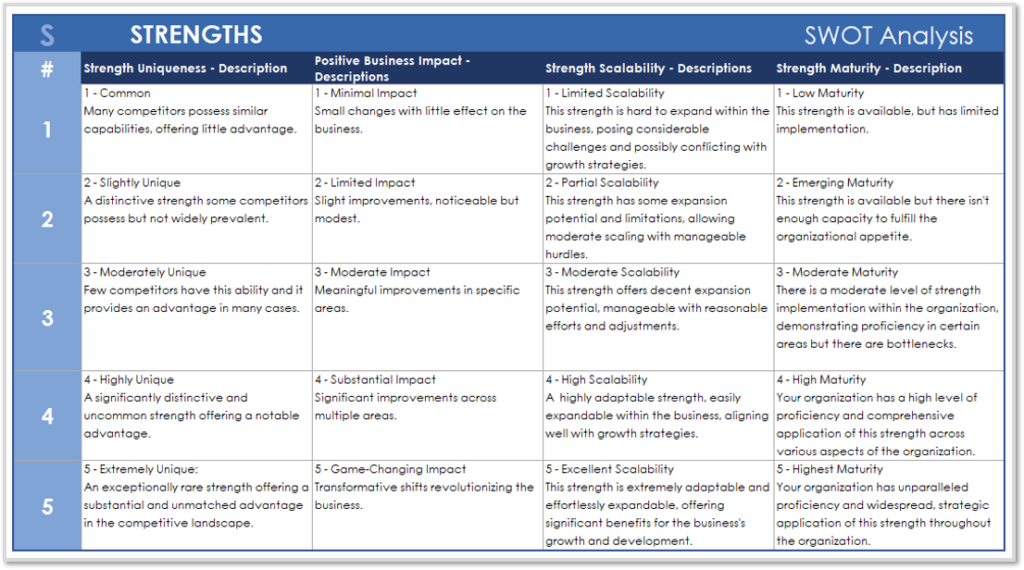
How to Score SWOT Weaknesses
Next, you’ll be asked to brainstorm company weaknesses. This can be a bit less enjoyable than the strengths. Some businesses have a hard time finding any weakness in their company, but often this is a sign of irrational exuberance, common in early-stage businesses. Having weaknesses is great, because that means you have awareness of your business and an improvement runway. Once your weaknesses are plotted, you’ll score them on the following BARU criteria:
- Business Impact: How much does this weakness prevent you from reaching goals?
- Ability to Mitigate: How much can you change this now?
- Resource Requirement: How much time, money, and opportunity cost will it take to address this weakness?
- Urgency for Improvement: When will this become one of, or substantially impact, your top issues?
Your scoring will be fairer if you focus less on the justification for having the weakness. Once you’ve scored all weaknesses, check the dashboard and see how well it lines up. You don’t need a perfect balance between strengths and weaknesses, but if there is too much of an imbalance, that may signify you have more analysis to do.
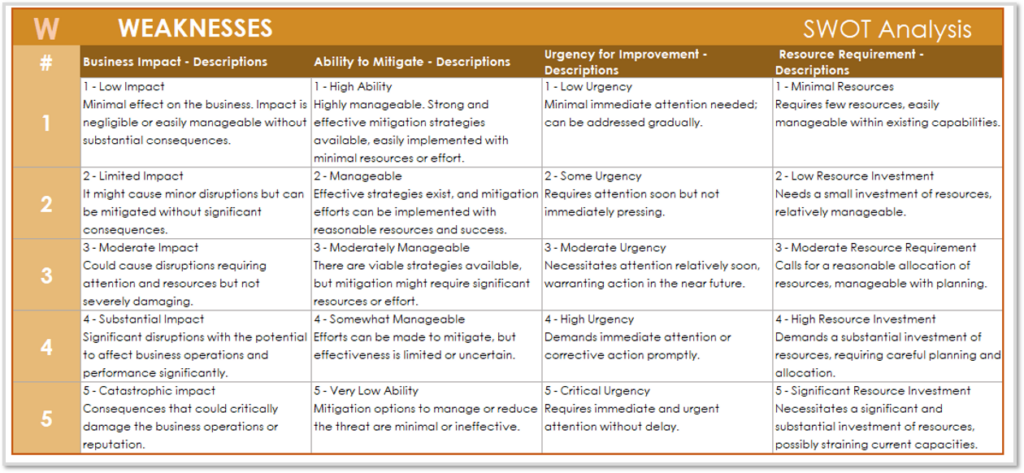
How to Score SWOT Opportunities
Now it’s time to focus externally, on what lies ahead. Think through the various scenarios that could play out, accelerating your business goals. List out the top 10-15 opportunities you foresee, then use BALA to score them:
- Business Impact: On a scale from minimal to game changing, what are the likely ranges of outcomes if you capitalize on this opportunity?
- Ability to Initiate: How much of the proverbial ball is in your proverbial court?
- Likelihood: From definitely to pipe dream, what are the realistic chances of this opportunity going your way?
- Ability to Influence: How much influence can you exert to make this come to pass?
There is a tendency for leaders to be overly optimistic about the likelihood of an opportunity landing successfully. They also misunderstand the amount of control and influence they have over the opportunity. For the best result, validate these elements, rather than just going on gut feel.
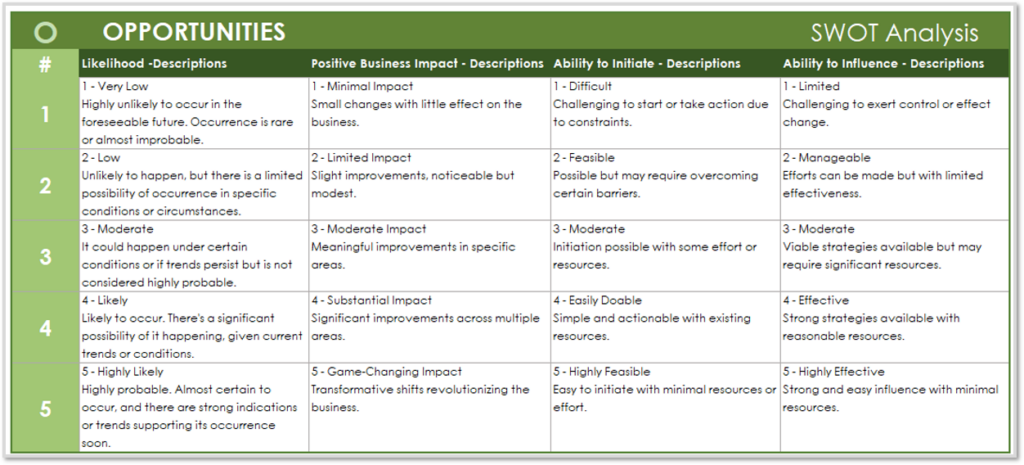
How to Score SWOT Threats
Threats are negative outcomes that can arise. Sometimes we can see these coming from a mile away, other times, they jump out of the bushes and cut you.
- Business Impact: From meh, to catastrophic, what will happen if this threat materializes?
- Ability to Mitigate: How much avoidance or damage control do you have?
- Likelihood: What are the chances this happens?
- Early Warning Signs: What will signify this threat is heading your way?
Your ability to successfully navigate the threat depends in part on preparation and advance warning. Go through your threat list again and define the next level of detail for early warning signs. The more you can see the threat coming, the more you can prepare.
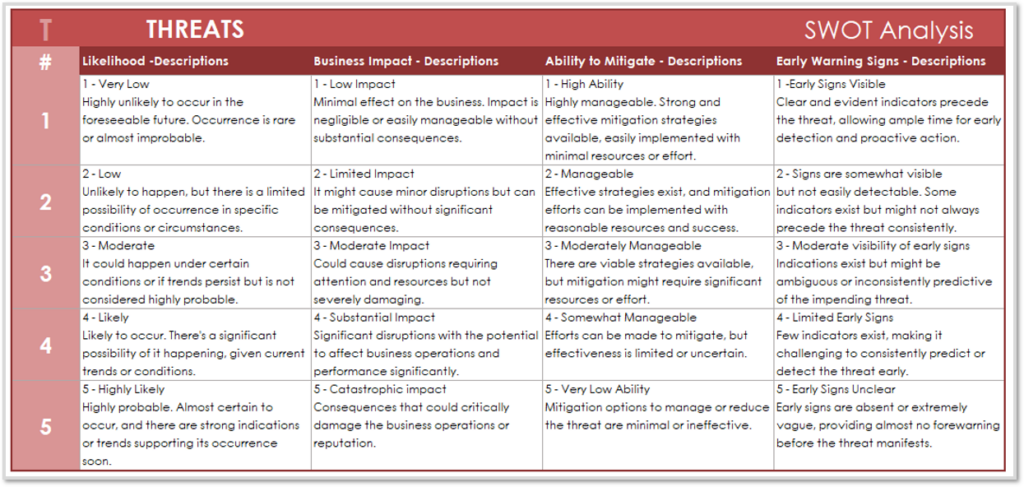
SWOT Implementation Strategies
Based on the scored elements, the template’s dashboard automatically generates a visual representation of your business’s strengths, weaknesses, opportunities, and threats against their potential impact. This aids in identifying priorities and outlining strategies – whether it’s maintaining, enhancing, mitigating, or monitoring these aspects. The video has a more complete description of the strategy available and when to use each.
Conclusion
Mastering the SWOT analysis empowers leaders to make informed decisions and chart a strategic course for their businesses. Coupled with the Horizon system, this analysis serves as a compass, guiding your business toward its goals.
Remember, a SWOT analysis is just the beginning. Use the insights you gain to develop concrete strategies:
- Exploit strengths: Leverage your unique advantages to dominate your market.
- Minimize weaknesses: Invest in resources or training to turn weaknesses into strengths.
- Capitalize on opportunities: Be proactive and adapt to seize emerging possibilities.
- Counter threats: Develop contingency plans to navigate and overcome potential challenges.
Don’t miss out on this opportunity to gain clarity and direction for your business. Download the free SWOT analysis template and the Horizon spreadsheet and get started organizing.

